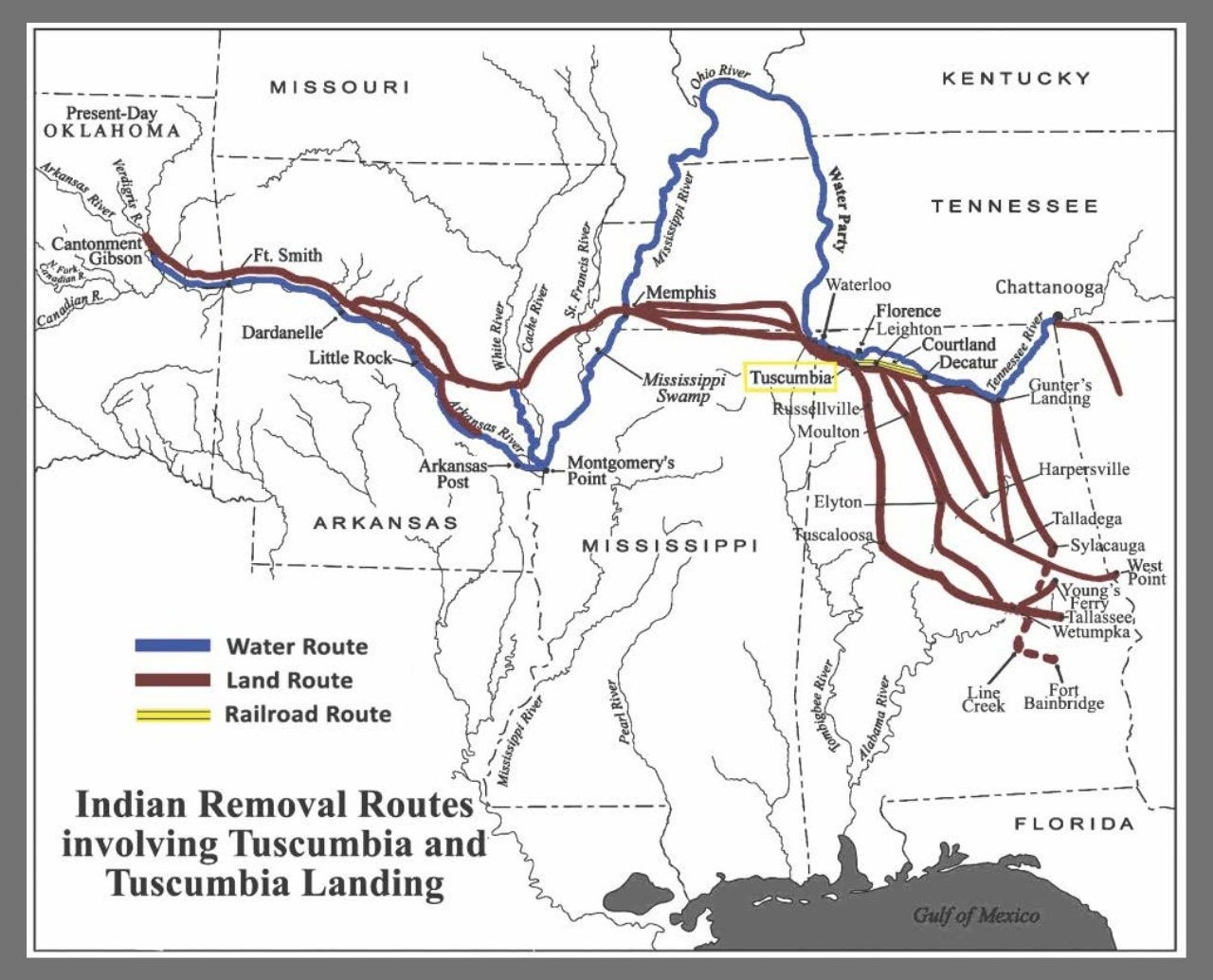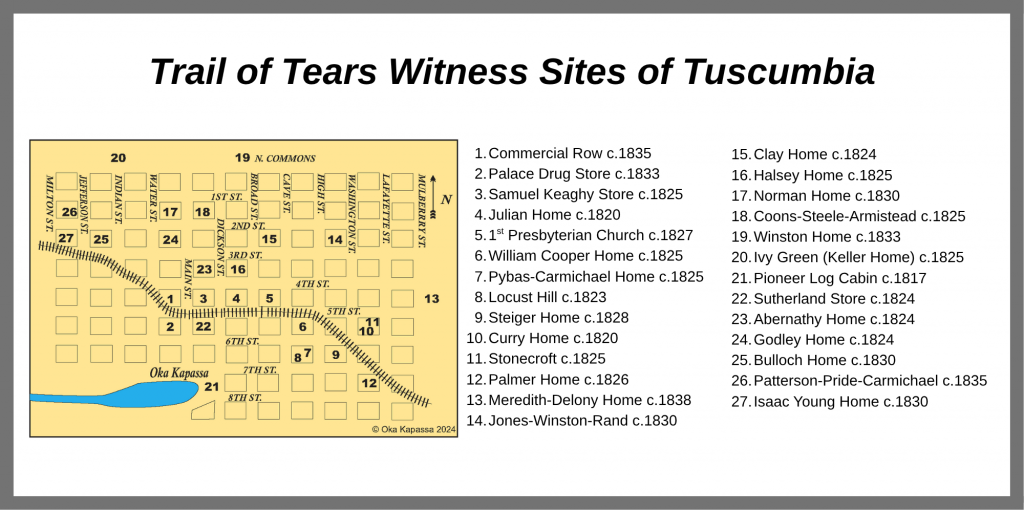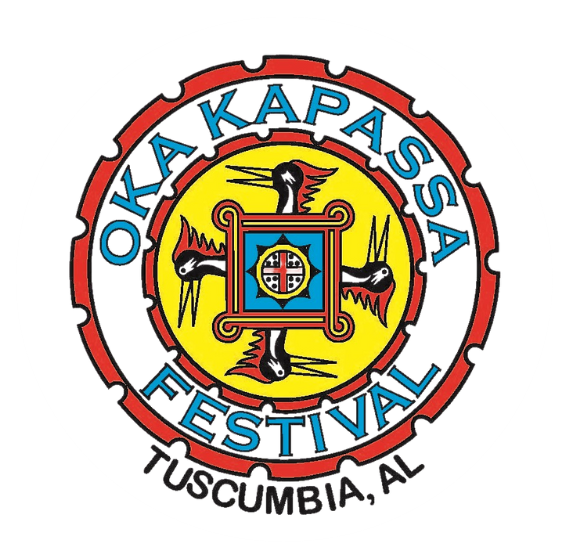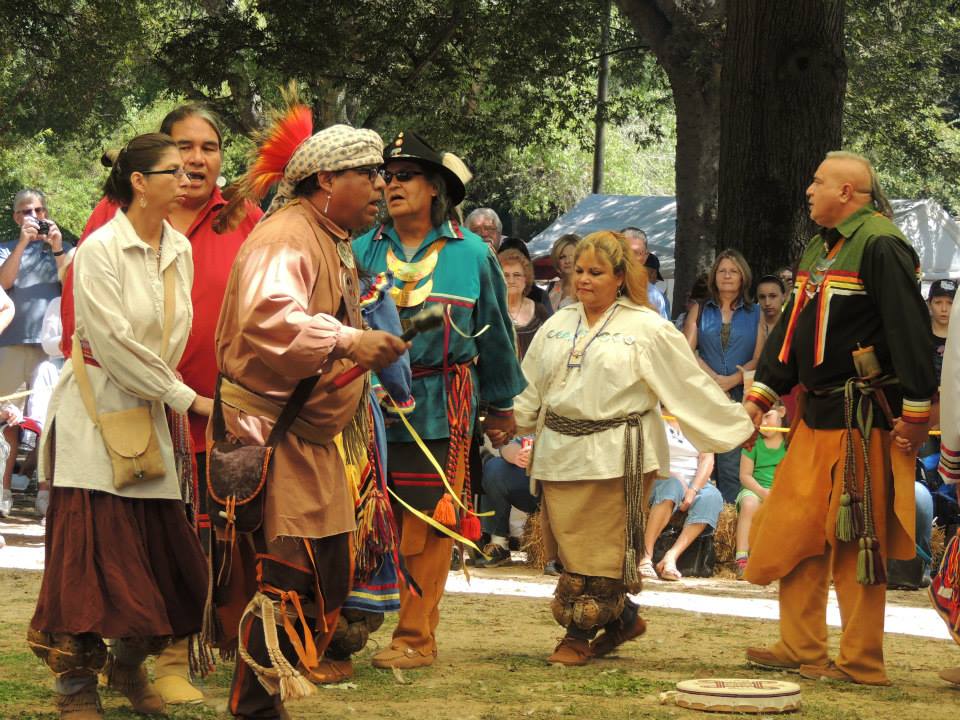Return to Coldwater and Tuscumbia
In 1827, prior to the Indian Removal Act, about 740 Creek were forced to leave their homes in Georgia and move toward Alabama. They were driven from their homes in the middle of the night with little food, clothing, or supplies for the long winter journey. As they marched toward Tuscumbia, history tells of a circuit riding preacher, who met them. Seeing their deplorable condition, he asked, “Where are you going?” to which they responded, “Trying to reach Tuscumbia by nightfall.” The preacher galloped back to town and described the terrible conditions witnessed. The townspeople gathered clothing and blankets and prepared food to feed the people. When the Creek arrived, they were received with great hospitality. Chief Chilley McIntosh wrote a letter to the good citizens thanking everyone for their kind treatment. He ended the letter by saying, “As long as our Nation remains upon this earth, we will recollect Tuscumbia.”
This generous and compassionate treatment of the Native Americans on their journey west places Tuscumbia in a unique position in American history as a community of hospitable and caring people. The huge flowing spring in the area is called Oka Kapassa, meaning “cold water” in the Muskogean language. Chickasaw, Creek, Choctaw, and Cherokee are just some of the Native People who camped around this welcoming spring. Each year the Nations journey to Tuscumbia, Alabama, to share their culture, heritage, and legends and to “recollect” Tuscumbia.
American Indian Removal Routes Involving Tuscumbia
During the Indian Removal Era from 1827-1839, Tuscumbia and Tuscumbia Landing were in the path of many of the routes used to move the Native Americans west, especially the Creek and Cherokee. A small group of Chickasaw people left Tuscumbia on their passage west. Beginning with the McIntosh Party of Creek Indians in November 1827, to the John Ross Party of Cherokee Indians in December 1838, more than 16,000 Native Americans passed through or near Tuscumbia. Over 2,100 Native people arrived by train on the Tuscumbia, Courtland and Decatur Railroad (TC&D) from Decatur, Alabama to Tuscumbia Landing. From the Landing, they departed this region by water on their journey to Indian Territory.
Today Tuscumbia Landing is a pristine site for the Trail of Tears. It is rare because it was not covered with water when the dams were built along the Tennessee River during the early 1900s. It is also the only site where Native Americans were transported by rail and loaded on boats for their removal to the West and is designated a historic landmark by the National Park Service.

Tuscumbia Witness Sites
The term “witness site” refers to locations that bear witness to Native American history and culture. Tuscumbia is unique as an area that has a large number of witness sites that were present during the Trail of Tears and are still standing today. Many of the shops were visited by Native Americans during that time.


